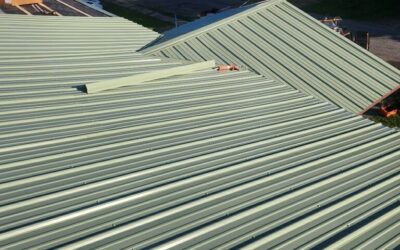🧰 How to Shingle a Roof: The Ultimate Step‑by‑Step Guide
Replacing or installing asphalt shingles is one of the most common roof upgrades, balancing cost, durability, and aesthetics. Whether you’re a capable DIYer or vetting a professional, this guide covers everything—from materials to pro tips—for a reliable, long-lasting roof system.
1. Why Choose Asphalt Shingles?
- Popularity & affordability: Asphalt shingles are the most commonly used residential roofing material in the U.S. due to their budget-friendly price and wide design range.
- Material options: Available in basic three-tab shingles (which last around 20 years) or dimensional architectural shingles (lasting up to 50 years).
- Performance: They are cost-effective, weather-resistant, and energy-efficient when properly installed with reflective options available.
2. Preparing for Your Shingle Job
A. Safety First
Always prioritize fall protection gear: harnesses, slip-resistant shoes, gloves, hard hats, and ladder stabilizers. Never work during wet or windy conditions.
B. Measure Your Roof
Calculate the square footage of your roof and divide by 33 to determine how many bundles you’ll need. Always add 10–15% for waste, valleys, and ridges.
C. Inspect the Roof Deck
Before laying any material, inspect the roof decking for rot, water damage, or warping. Replace compromised decking to ensure a stable surface.
D. Plan Ventilation
Proper attic ventilation is crucial for roof longevity. Use a balanced system of ridge vents and soffit vents, following the 1:300 or 1:150 ratio based on your local building code.
3. Shingle Installation Steps
Step 1: Tear-Off & Deck Preparation
Remove old shingles to inspect the roof deck. While re-roofing (shingling over existing shingles) is permitted in some areas, a complete tear-off is the best option for longevity.
Step 2: Ice & Water Shield Installation
Install ice and water membrane along the eaves, valleys, and around roof penetrations like chimneys and skylights. This is critical for preventing leaks caused by ice dams and wind-driven rain.
Step 3: Drip Edge & Underlayment
Install a metal drip edge along the eaves and rakes. Follow that with a layer of roofing underlayment (felt or synthetic) from the bottom up, overlapping each course by at least 2 inches.
Step 4: Starter Strip Installation
Nail down starter strips along the eaves and rakes. These help prevent wind uplift and create a waterproof seal at the edges of your roof.
Step 5: Install Shingles
Lay shingles from the bottom of the roof upward and from the left to right. Stagger the seams by at least 6 inches, using four to six nails per shingle depending on your local wind zone.
Step 6: Valleys and Flashing
For valleys, use either an open or closed valley technique with metal flashing or woven shingles. Around chimneys and walls, install step flashing and counter flashing to seal the transition points.
Step 7: Ridge Cap Installation
Once all shingles are laid, install ridge cap shingles along the roof’s peak, overlapping each piece and ensuring nails are sealed properly.
Step 8: Final Cleanup
Remove all debris, sweep for nails with a magnet, and inspect flashings, vents, and seams for any potential gaps or issues.
4. Pro Tips for Shingling Success
- Use shingles from the same batch to avoid color inconsistencies.
- Avoid nailing into or above the adhesive strip.
- Use 6 nails per shingle in high-wind areas or steep slopes.
- Install proper attic ventilation to avoid heat buildup and shingle damage.
- Always follow manufacturer guidelines and local building codes.
5. Common Problems to Avoid
- Improper nail placement: Too high or too deep nails can cause blow-offs or shingle damage.
- Lack of ventilation: Poor airflow causes heat and moisture buildup, shortening roof life.
- Skipping underlayment or starter strips: These errors can cause leaks and void warranties.
- Poor flashing work: Improper chimney or wall flashing is one of the most common sources of roof leaks.
6. Types of Asphalt Shingles
- Three-tab shingles: Flat, economical, and easy to install. Lifespan: ~20 years.
- Architectural (dimensional) shingles: Heavier, with a layered look. Lifespan: 25–30+ years.
- Luxury or premium shingles: Highest quality with extended lifespan and greater resistance to wind and impact.
7. Cost Considerations
- Material costs: Asphalt shingles range from $90 to $150 per square (100 square feet).
- Labor: Expect to pay $3.50–$5.50 per square foot installed.
- Additional costs: Tear-off, disposal, deck repairs, ventilation upgrades, and flashing installation can raise your total cost.
- Return on investment: Asphalt shingles typically deliver a strong ROI due to low cost and high performance.
8. DIY vs. Professional Installation
| Aspect | DIY | Professional |
|---|---|---|
| Safety | High risk without proper gear | Trained and insured for safety |
| Time & Effort | Slower, especially for large roofs | Efficient and fast completion |
| Installation Quality | May lack proper technique | Code-compliant, often with warranties |
| Cost | Lower upfront cost | Higher cost but long-term savings |
While DIY can be rewarding, professional roofers bring expertise, safety measures, and often better long-term outcomes—especially on steep or complex rooflines.
9. Maintenance Tips
- Inspect the roof twice a year and after major storms.
- Clear debris from shingles and gutters to prevent clogs and moisture buildup.
- Check flashing and ridge caps for signs of wear.
- Replace curled, cracked, or missing shingles promptly.
- Ensure attic remains properly ventilated to prevent mold and heat damage.
10. Frequently Asked Questions
Q: Can you install shingles over old ones?
A: Yes, in some areas you can install one additional layer. However, it’s not recommended because you can’t inspect the decking, and it can void manufacturer warranties.
Q: How long does it take to shingle a roof?
A: A simple roof on an average-sized home can be done in 1–2 days by professionals, but it could take much longer for DIYers.
Q: What are the best weather conditions for installation?
A: Dry weather between 45°F and 85°F is ideal. Avoid extremely hot days, as shingles become soft and difficult to work with.
Q: How many nails per shingle should I use?
A: Typically, 4 nails per shingle is standard, but 6 nails are recommended for steep slopes or high-wind areas.
Q: How long will asphalt shingles last?
A: Three-tab shingles last about 20 years, while architectural shingles can last 25–30 years or more with proper installation and maintenance.
🔨 Final Thoughts
Installing asphalt shingles is a practical and cost-effective way to protect your home. When done correctly, it provides excellent weather resistance, curb appeal, and energy efficiency. Whether you choose to DIY or hire a professional, understanding how to shingle a roof empowers you to make informed decisions and ensure the job is done right.
If you’re planning a new roof or just want a professional opinion, consider contacting a trusted local roofing company for an inspection and estimate
 (440) 307-2060
(440) 307-2060

